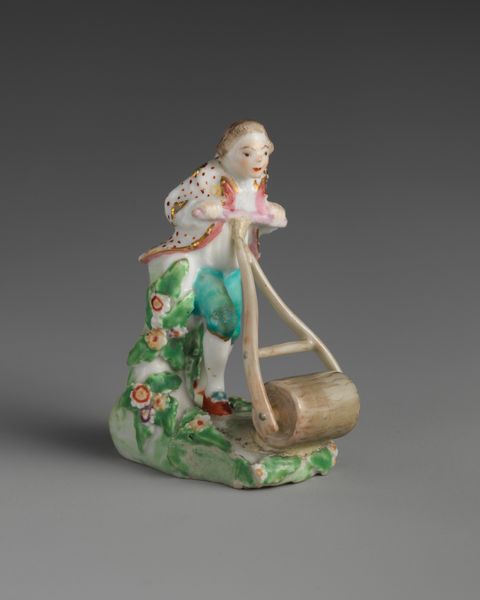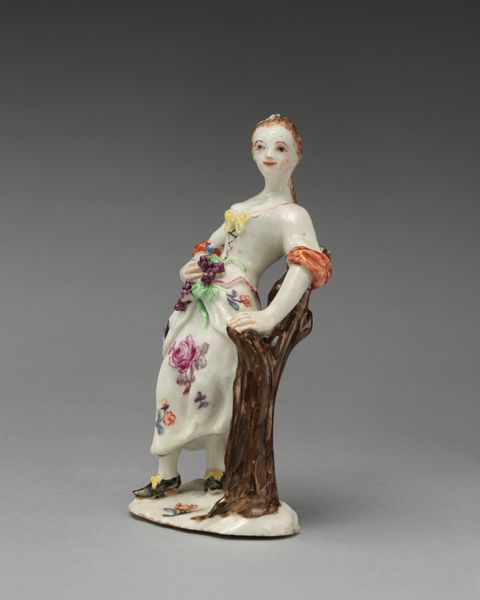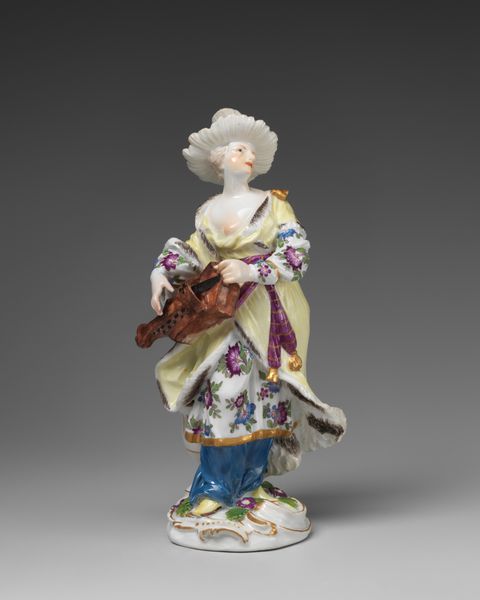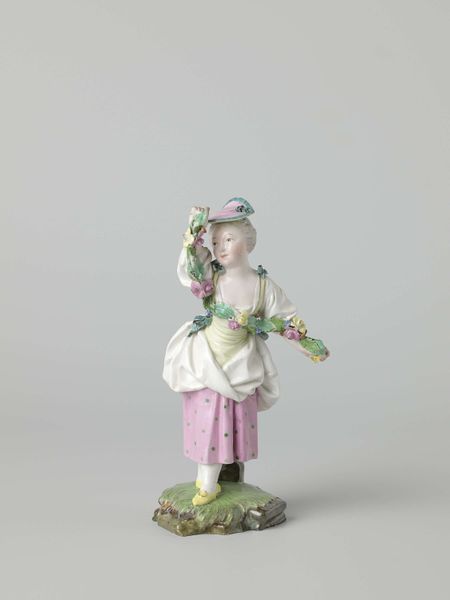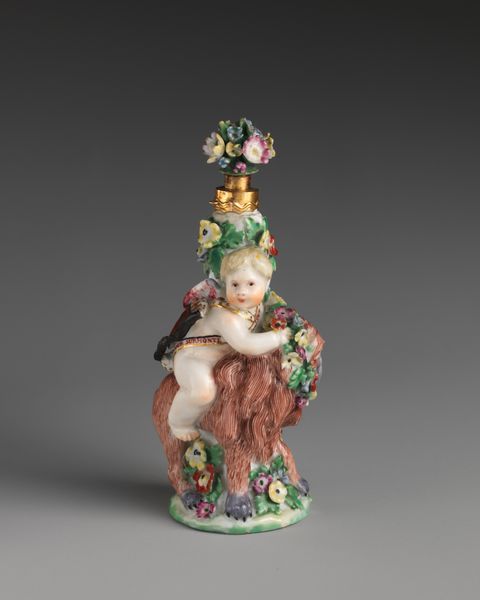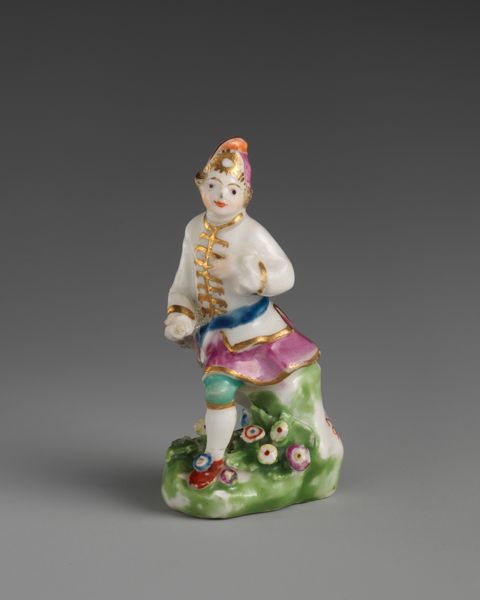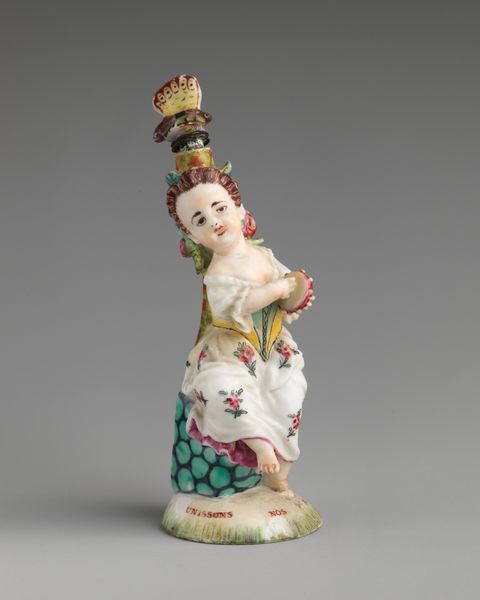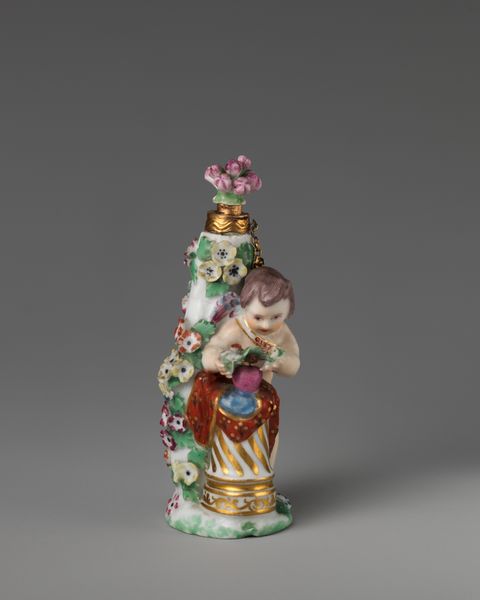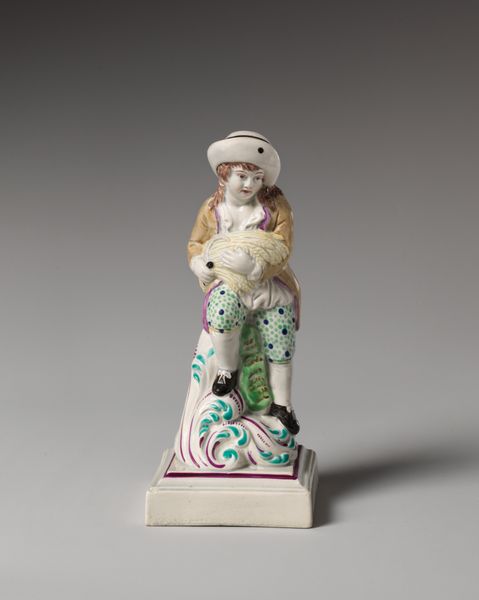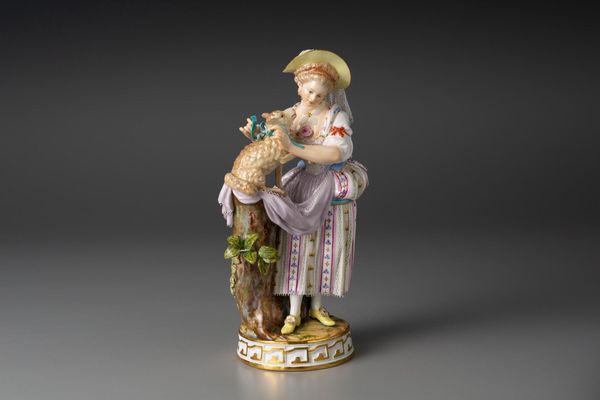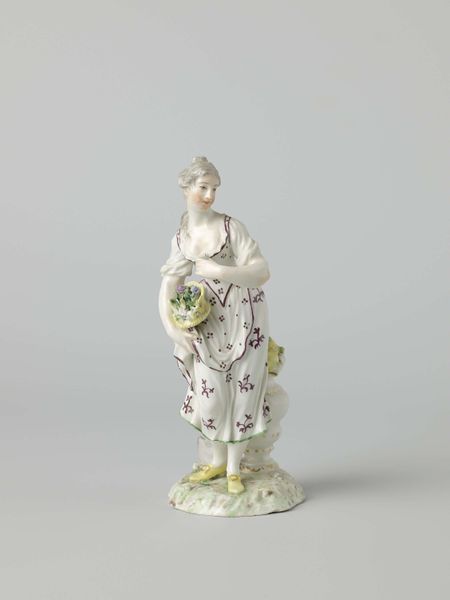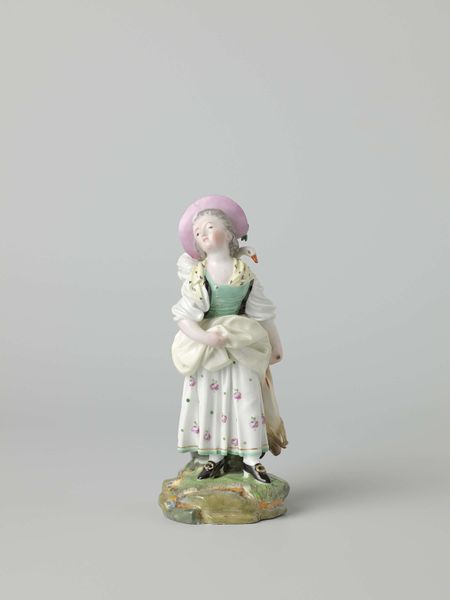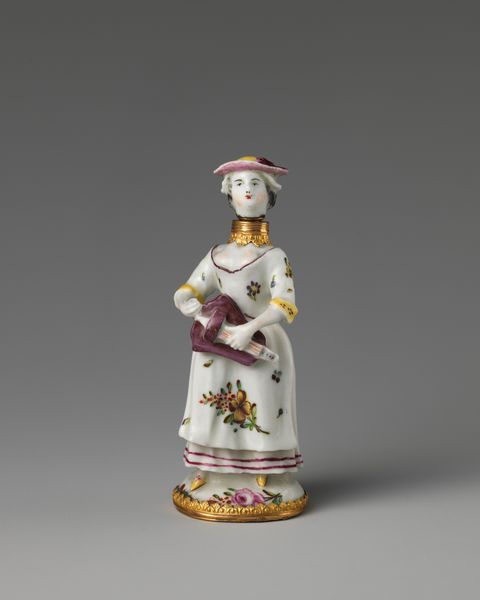
ceramic, porcelain, sculpture
#
portrait
#
ceramic
#
porcelain
#
figuration
#
sculpture
#
decorative-art
#
rococo
Dimensions: 2 1/2 × 1 in. (6.4 × 2.5 cm)
Copyright: Public Domain
Editor: This petite porcelain sculpture, titled "Lady," was crafted by the Derby Porcelain Manufactory between 1760 and 1770. She strikes me as quite poised and delicate, yet her slightly averted gaze hints at a hidden story. What can you tell me about her? Curator: Indeed. She's seemingly innocent, but we can use theory to dismantle that illusion. Where was a piece like this meant to be displayed and for whom? Rococo art like this was for the wealthy and powerful. Porcelain figures like these were essentially luxury goods; symbols of status and taste. The figure might symbolize patriarchal ownership and power structures of the 18th century, and this woman exists to decorate space. What do you think? Editor: So you're saying that while she looks delicate, her very existence reinforces social hierarchies? The way her gaze is averted makes me feel like she has a position of subjugation. Curator: Precisely. Think about the materials, too. Porcelain was, and still is, incredibly precious, connecting the figure to global trade networks steeped in colonialism and exploitation. What kind of labor was needed to mine the materials? How does this small, seemingly harmless, figure connect to massive power dynamics? How might the identity of this 'lady' been constructed through the male gaze and societal expectations of femininity? Editor: I never considered how even a small object like this could be embedded in such a complex web of power. The dots of colors also are also reminiscent of diseases like measles, the spots all over the sculpture can have very serious implications that represent death, mourning, and power imbalances in 17th century Europe. It also brings a feeling of unease. Curator: It’s all about critically examining the object and teasing out the underlying narratives. Editor: Thanks for the analysis. It changed how I view the art object and shifted it to include broader cultural implications and its original power dynamic implications.
Comments
No comments
Be the first to comment and join the conversation on the ultimate creative platform.
